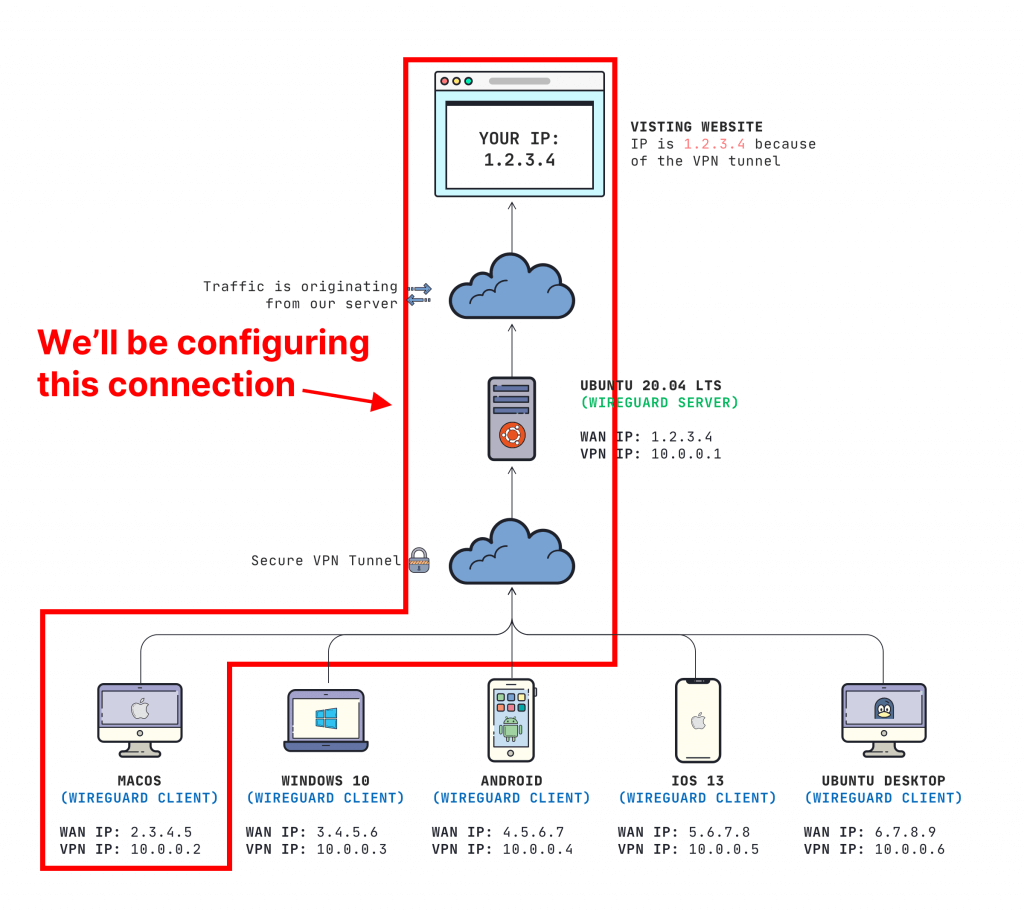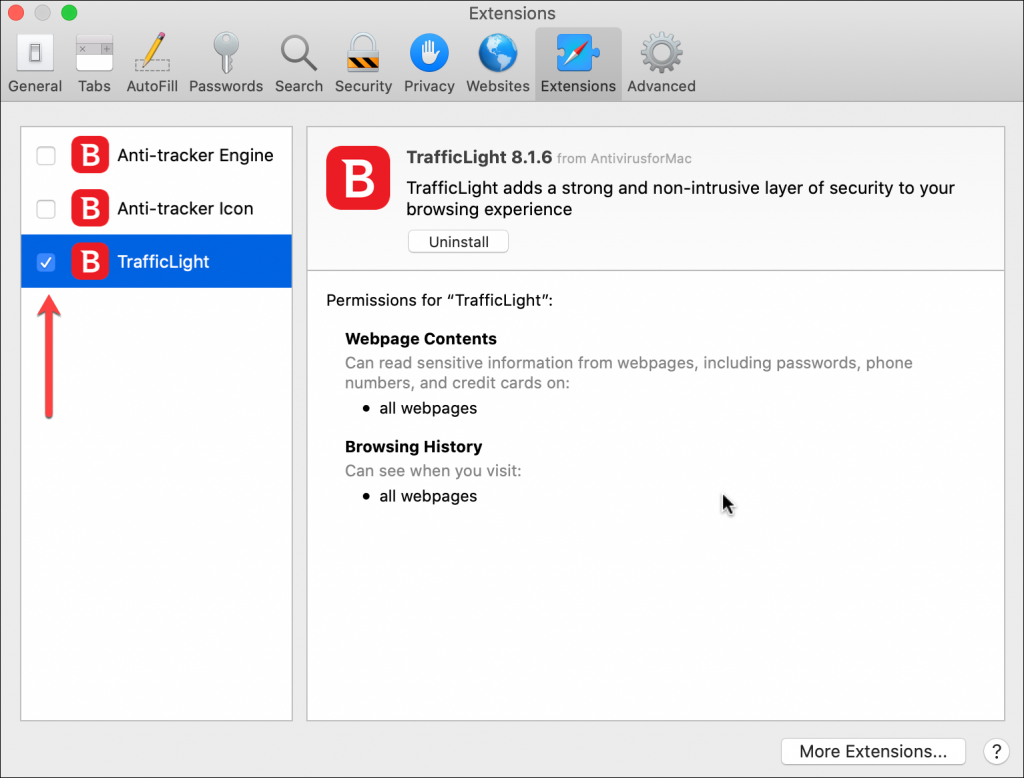Capturing 802.11 Traffic with OS X. Nigel Bowden (@WifiNigel) recently posted an excellent article describing the RadioTap headers in packet captures, and I immediately muddied the waters by posting fairly poor tips on capturing 802.11 headers using tcpdump on OS X. I felt it my civic duty to set the record straight. As Nigel points out, the RadioTap Headers are added by the NIC and driver.
- Mac OSX routing all traffic over vpn? I've run into an issue with mac clients connecting to our ike v2 vpn. They connect up fine but once connected all web traffic is also routed over the vpn, we want just vpn traffic to use the tunnel.
- The Traffic user interface is represented by a small status bar menulet that provides details about the WiFi network on mouse over. The utility displays the SSID, the MAC address, the BSD name, the BSSID, the RSSI, the noise, and the transfer rate. Moreover, Traffic provides information about your computer’s.
Is your Mac up to date with the latest version of the Mac operating system (macOS or OS X)? Is it using the version required by some other product that you want to use with your Mac? Which versions are earlier (older) or later (newer, more recent)? To find out, learn which version is installed now.
If your macOS isn't up to date, you may be able to update to a later version.

Which macOS version is installed?
From the Apple menu in the corner of your screen, choose About This Mac. You should see the macOS name, such as macOS Mojave, followed by its version number. If you need to know the build number as well, click the version number to see it.
This example shows macOS Catalina version 10.15 build 19A583.
Which macOS version is the latest?
These are all Mac operating systems, starting with the most recent. When a major new macOS is released, it gets a new name, such as macOS Catalina. As updates that change the macOS version number become available, this article is updated to show the latest version of that macOS.

If your Mac is using an earlier version of any Mac operating system, you should install the latest Apple software updates, which can include important security updates and updates for the apps that are installed by macOS, such as Safari, Books, Messages, Mail, Music, Calendar, and Photos.

| macOS | Latest version |
|---|---|
| macOS Catalina | 10.15.7 |
| macOS Mojave | 10.14.6 |
| macOS High Sierra | 10.13.6 |
| macOS Sierra | 10.12.6 |
| OS X El Capitan | 10.11.6 |
| OS X Yosemite | 10.10.5 |
| OS X Mavericks | 10.9.5 |
| OS X Mountain Lion | 10.8.5 |
| OS X Lion | 10.7.5 |
| Mac OS X Snow Leopard | 10.6.8 |
| Mac OS X Leopard | 10.5.8 |
| Mac OS X Tiger | 10.4.11 |
| Mac OS X Panther | 10.3.9 |
| Mac OS X Jaguar | 10.2.8 |
| Mac OS X Puma | 10.1.5 |
| Mac OS X Cheetah | 10.0.4 |
Charles Proxy is one of the most well known SSL debugging tools. Charles has got us out of a bunch of jams before, and we've always kept this around for when we need it:
However:
- Charles requires Java to be installed and enabled.
- It has a clunky UI.
Reinstalling Charles' root certificate after OS X updates is boring. You need to run:
These drawbacks don't stop Charles from being a useful piece of software, and we'll keep Charles around. However if you just want to see the unencrypted contents of your SSL traffic from a web browsing session, and if that browser is Chrome or Firefox, there's a simpler solution.
Wireshark 2 was just released. It has an OS X native UI. Best of all you can use it in conjunction with Chrome or Firefox to inspect SSL traffic incredibly easily.
Got a copy? Let's go:
Start capturing packets
Replace en0 with your network interface as reported by ifconfig (OS X) or ip addr (Linux).
Make your browser save session keys
Stop any existing instances of Chrome or Firefox (whichever you're intending to use).
Then open a Terminal and run the following:
Traffic Lights Mac Os X
Start either Chrome or Firefox:

Browse to an https:// URL. It will start creating the session-key.log file.
If you like, you can watch it in a terminal:
If you're interested, the session key format is documented at Mozilla:
- A Client_Random entry for Diffie-Hellman negotiated sessions
- An RSA entry is for sessions using RSA or DSA key exchange.
View the capture using the session key to show the encrypted contents

Traffic Light Mac Os
Open the .pcap file and visit Wireshark > Preferences. Under Protocols, scroll down to SSL and load the file. You can skip to just the https parts with the following filter:
Traffic Generator For Mac Os
And a specific host with:
Traffic For Me Cost
To look at a particular TCP session, right click on any of the entries and choose to “Follow SSL Stream”.
Conclusion
Traffic Generator Mac Os X
We hope you'll find the session keys method shown here is as useful as we do. You will probably want to keep Charles around for apps like wget and curl. That said, if the reason you're using wget or curl is to test a REST API, consider Postman: it's a Chrome app, so uses Chrome session keys. It's more REST-focused so you'll spend more time testing and less reading a manual page.
